Best Content Creator Platforms in 2026: Top Websites for Creators
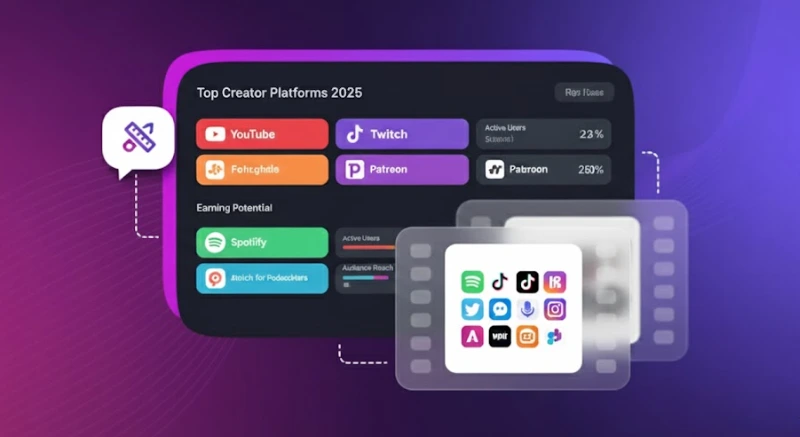
Content creators face immense challenges in creating high volumes of engaging and optimized content. It’s no surprise that they are constantly looking for ways to scale content production and make the process more efficient.
That’s where content creator platforms can help. However, the creator ecosystem is growing so rapidly that new platforms are launched every year, existing ones update their algorithms, and monetization features continue to evolve. These factors make it challenging to opt for a reliable content creator platform that can effortlessly create, manage, review, and publish content in one collaborative place.
In this article, we will explore the top content creation platforms of 2026 across video, written, and audio formats. We will share their features, benefits, and monetization opportunities, empowering you to choose the right platform for your content type, audience, and growth goals.
So, let’s get started.
Top Content Creator Platforms in 2026
Every creator has different criteria for the ideal content creation platform. Some platforms prioritize reach and discoverability, while others excel at amassing subscriptions. In 2025 and beyond, successful creators will diversify their portfolio; yet, they usually start by mastering one primary platform that matches their content type and audience.
In the upcoming sections, we will provide a breakdown of the leading content creator platforms by format, specifically video, written, or audio. This will help you choose a platform that aligns with your goals and monetization strategy.
Video-Centric Platforms
In 2025, content creators heavily rely on video to engage their audience and boost revenue. Videos, especially short-form video content, deliver the highest ROI compared to any other content format. No wonder video dominates the market with a 40% share in the global digital content creation market.
Let’s look at the top content creator platforms for videos and how they help you reach new audiences while monetizing your creativity.
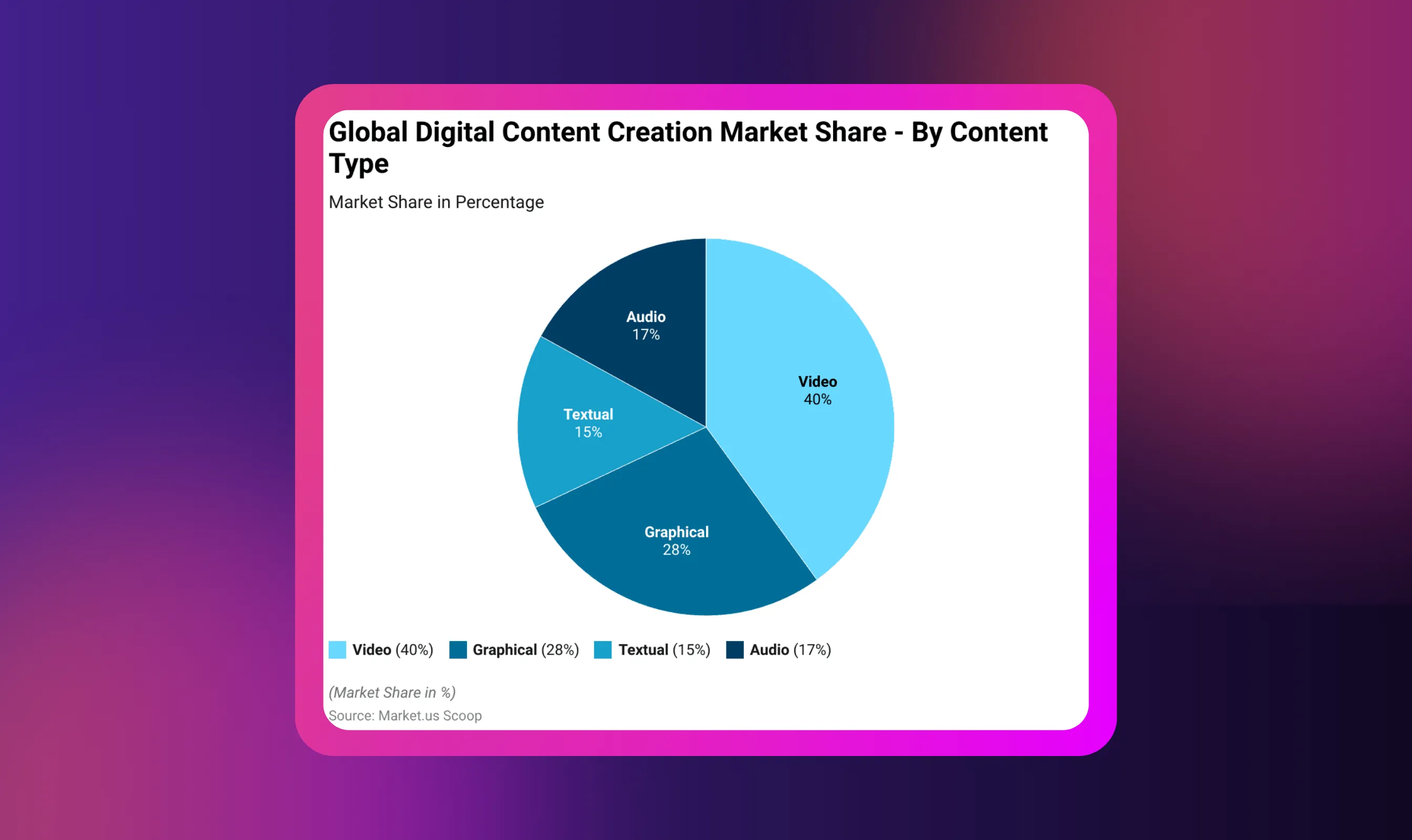
YouTube
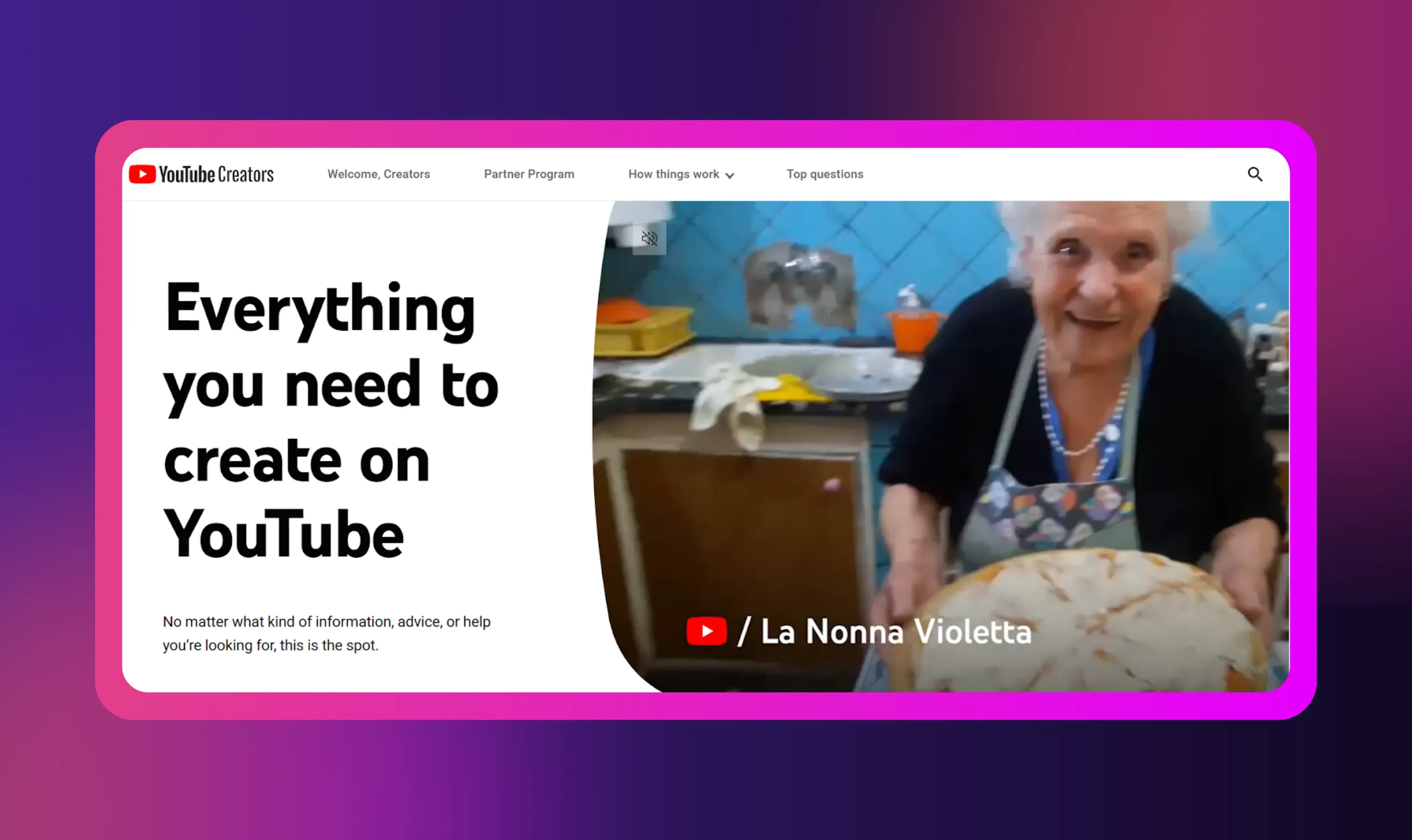
YouTube remains the world’s largest video platform and the backbone of the video creator economy. With more than 2.70 billion monthly active users, it’s one of the few content creation platforms where your video content will reach a wide audience, attract views, and generate revenue for years after sharing the content.
Monetization highlights:
- Ad revenue through the YouTube Partner Program.
- Channel memberships for recurring subscriber income.
- Super Chats/ Super Thanks for live-stream tips and donations.
- Brand deals and shopping integrations to sell products or collaborate with sponsors.
YouTube combines long-form, Shorts, and live streaming in one place; hence, creators can experiment with different formats while building an evergreen content library.
Educational channels, review shows, how-tos, and entertainment content all thrive here, making it a versatile launchpad for creators who want to reach their audience and make money on YouTube.
TikTok
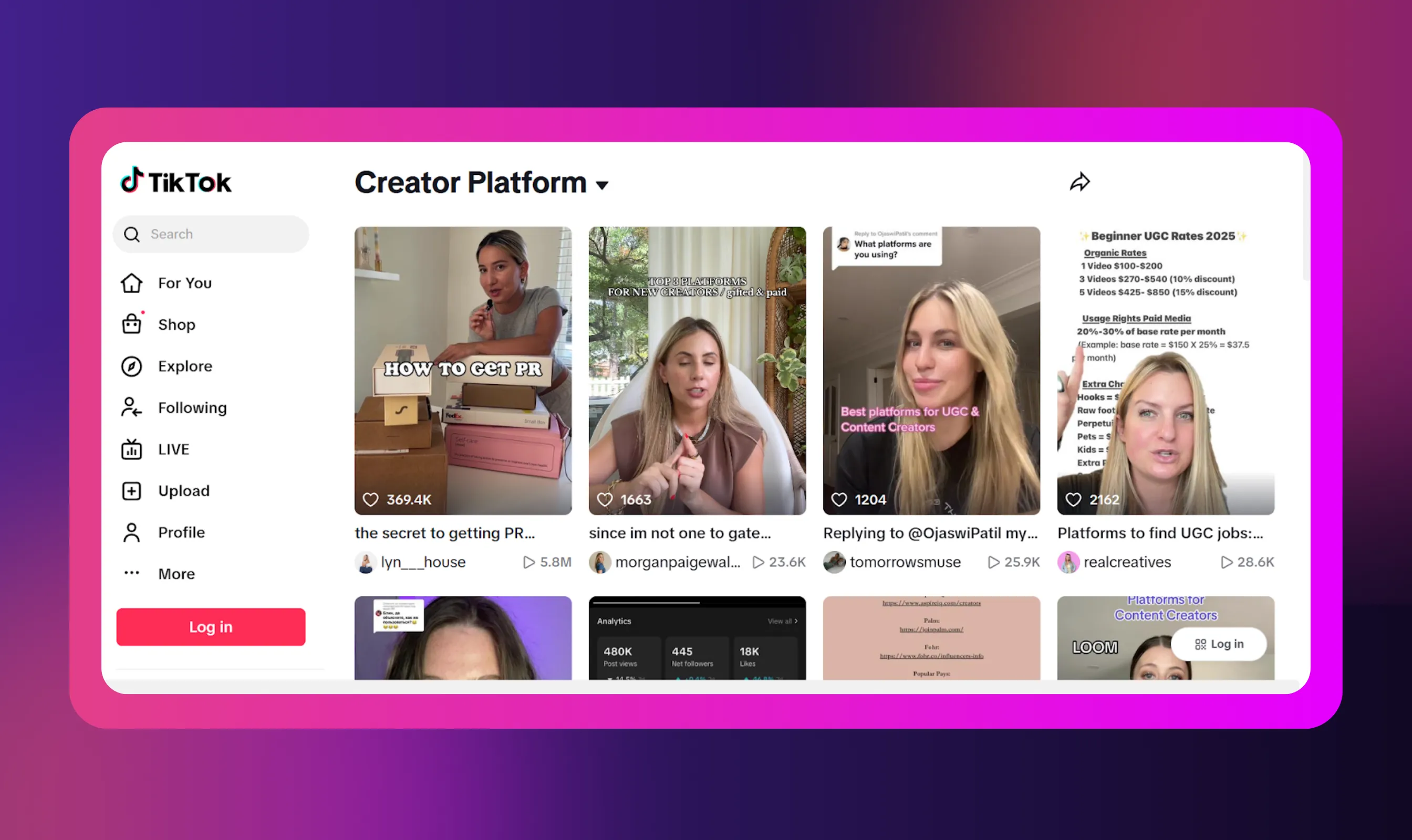
TikTok is still the short-form video powerhouse in 2025, driving trends and viral moments across the internet. By early 2025, the platform boasted 1.59 billion monthly active users, solidifying its place as one of the top video platforms globally. It is expected to cross the 1.9 billion mark by 2029.
TikTok’s For You Page (FYP) surfaces content tailored to each user’s interests rather than follower counts, giving every creator a chance to break out.
Monetization highlights:
- Creator Rewards Program (formerly Creator Fund) that pays based on views and engagement. It encourages creators to foster their creativity and generate higher revenue potential by sharing high-quality, original content.
- TikTok Shop to feature and sell products directly inside videos and live streams through a suite of in-app shopping touchpoints.
- Brand partnerships and sponsored content through TikTok’s Creator Marketplace.
TikTok offers unmatched reach for content creators sharing punchy content or who aim to test their content ideas rapidly. Pairing short-form virality with a YouTube channel or an online store can help turn this attention into long-term revenue.
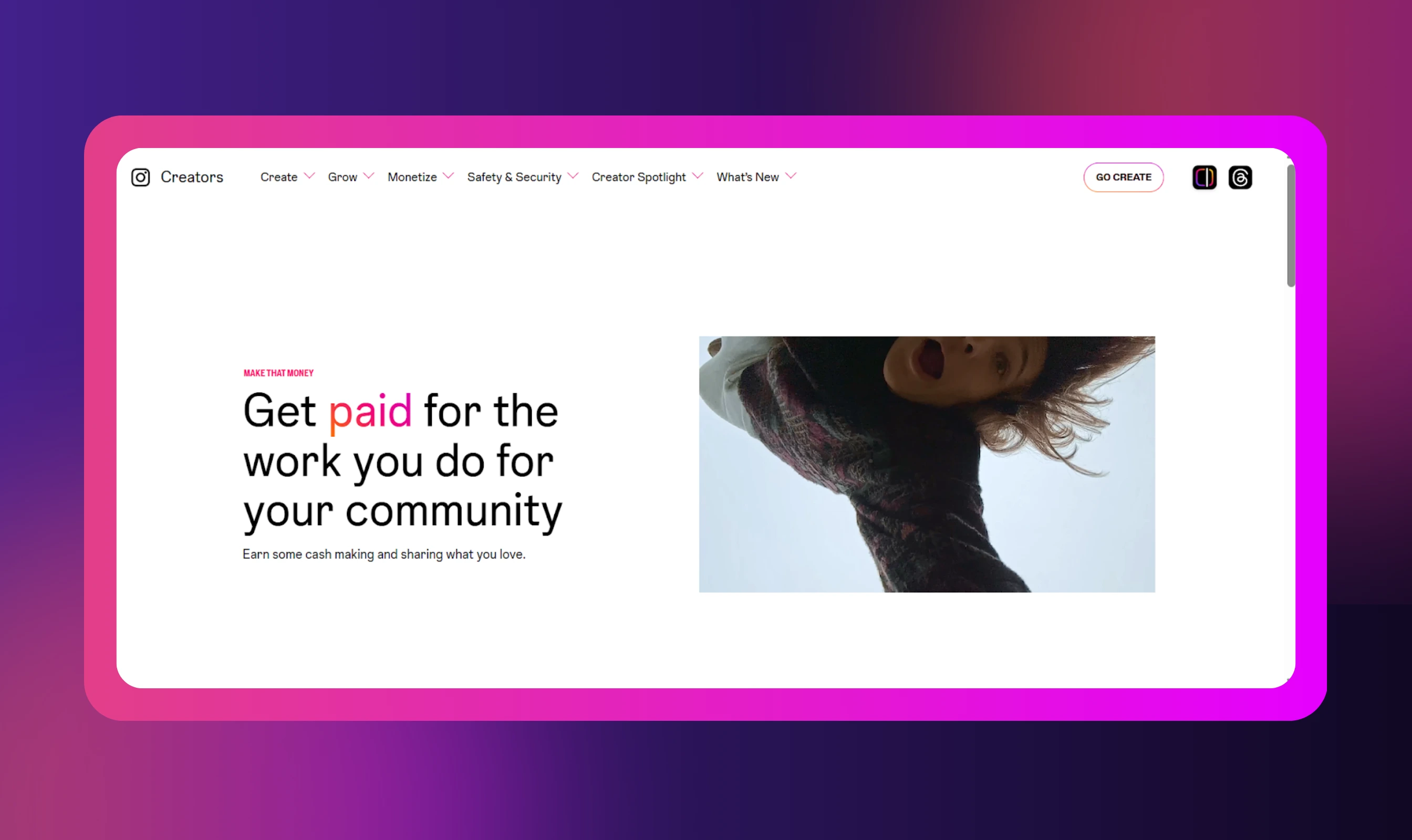
Instagram has evolved into a powerful mixed-media platform where photos, Stories, Reels, and Guides all thrive together. In 2025, it remains a key platform for content creators to establish a recognizable brand and maintain their community engagement. The platform helps creators leverage the power of video storytelling to amplify their reach and earn through branded content and partnership ads.
Monetization highlights:
- Reels Play bonuses (when available) to earn from short-form video views
- Paid subscriptions to offer exclusive content to your most loyal followers
- Branded content tools to collaborate with sponsors seamlessly
- Affiliate links and in-app shopping to drive direct sales from your content
Instagram helps creators build a lasting relationship with their audience through behind-the-scenes content. With engaging video content, creators can nurture fan communities and drive commerce all in one feed. The most successful creators are those who can effortlessly blend video with eye-catching visuals, yielding the best results in terms of engagement and revenue.
Written Content Platforms
Content creators are increasingly relying on long-form blogs, newsletters, and in-depth articles to engage their audiences and build a loyal following. This form of content provides detailed analysis, explanations, and real-life examples, particularly when addressing complex topics that require thorough elaboration.
Written content platforms are designed to make publishing, distribution, and monetization simple while keeping you closer to your readers. Here are two robust written content platforms that give creators more control, flexibility, and monetization opportunities while enhancing the experience for readers.
Medium
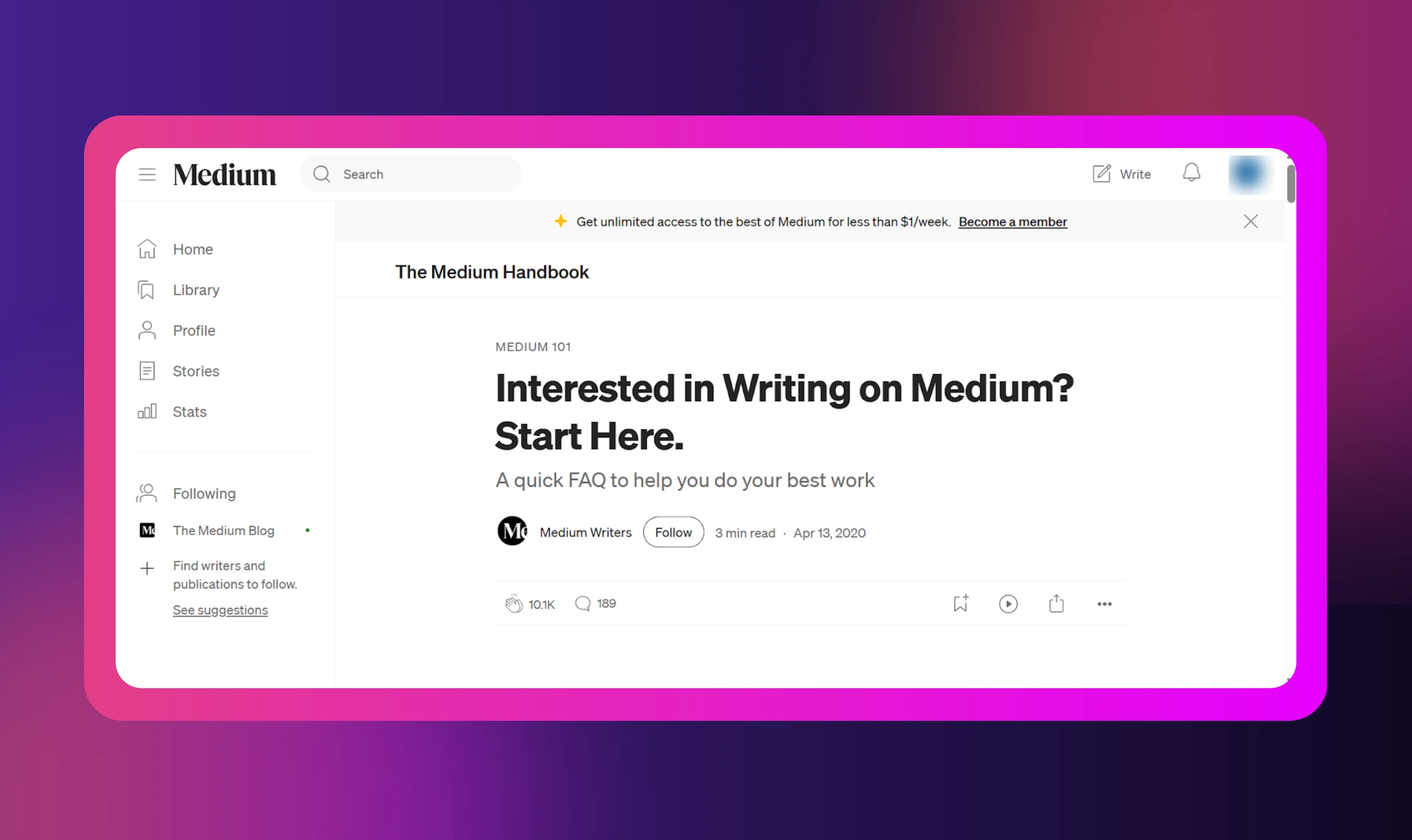
Medium is a go-to platform for creators looking to share their content with a wide audience. It promises a cleaner reading experience, built-in distribution, and a way to get paid through the Medium Partner Program.
The platform has a large built-in audience, boosting your content exposure to a vast segment of readers looking for essays, how-tos, and thought leadership across almost every topic.
Monetization highlights:
- The Medium Partner Program pays writers based on member reading time and engagement
- Referrals and email sign-ups to grow your own list directly from articles
- Paywalls and publications to bundle your writing with other creators
Medium is especially suitable for content creators who wish to test ideas, reach new audiences without managing their own blogs, and establish authority in their niche. The platform also integrates email subscription tools to allow creators to own their reader base as they grow.
Substack
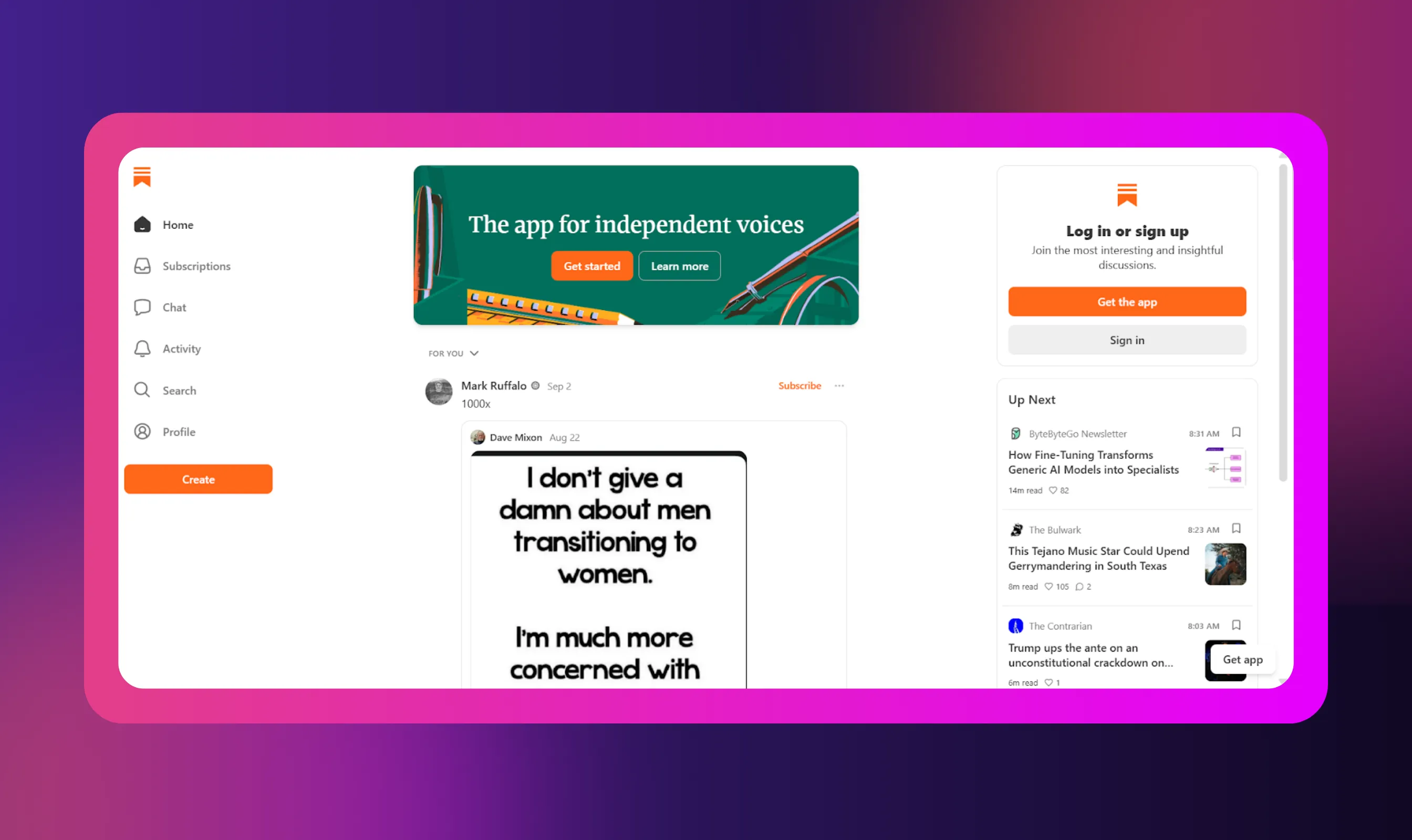
Substack is an established content creator platform that connects creators, ideas, and communities. The platform allows creators to send digital newsletters and content directly to their subscribers, who can be on free or paid subscriptions.
It is ideal for writers who want to build and monetize a newsletter-first audience. Creators can publish content to their subscribers’ inboxes without the noise of social feed. This makes it easier to nurture a loyal, high-value readership.
Monetization highlights:
- Paid subscriptions for premium editions of your newsletter
- Free + paid tiers so you can grow reach while reserving special content for paying supporters
- Integrated podcasts to diversify what you offer inside the same subscription
Substack works best for journalists, writers, analysts, and niche experts who want more control over their relationship with readers and a predictable, recurring income stream from their content.
Audio and Podcasting Platforms
With podcasts, audiobooks, and voice-led content series becoming mainstream ways to reach audiences, audio content is seeing a resurgence. Moreover, new audio technologies have made this content type more accessible, building an audience that prefers to listen over watching or reading.
In 2025 and beyond, dedicated audio platforms will make it simpler to record, host, distribute, and monetize shows without the need for heavy production budgets.
Here are five leading platforms creators use to build an audio-first audience and turn listeners into income.
Spotify
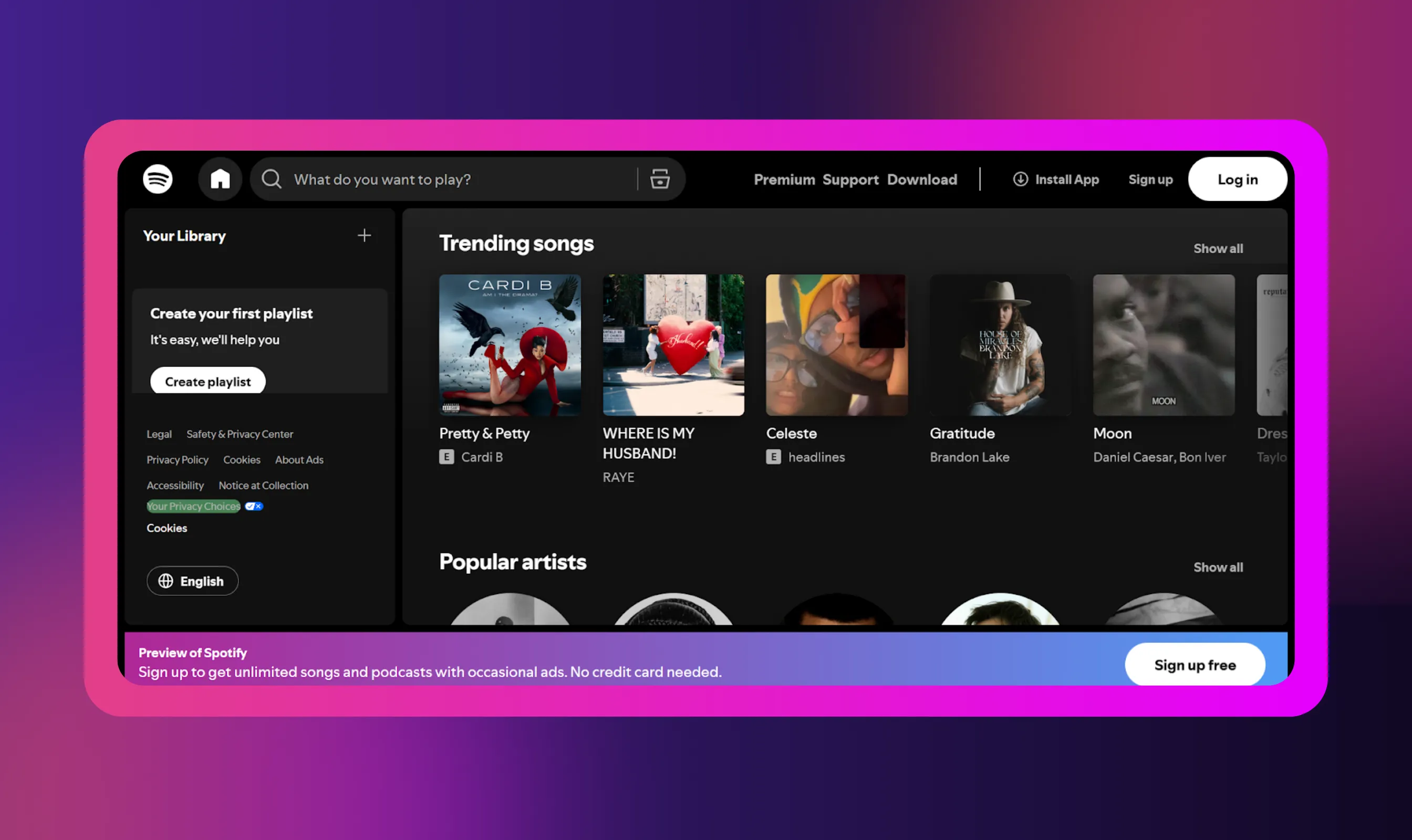
Spotify is the mainstream platform for podcasts, offering content creators access to millions of listeners globally. Its podcasting arm includes tools like Megaphone by Spotify for Creators that make it easy to upload, distribute, and analyze episodes from one dashboard.
Monetization highlights:
- Dynamic ad insertion and host-read ads through Spotify’s ad network
- Exclusive or premium episodes offered to paying subscribers
- Sponsorships coordinated directly with brands or through Spotify’s marketplace
Spotify is ideal for podcasters who want maximum reach and professional monetization options without juggling multiple hosting services. It also comes with built-in analytics tools that help you understand listener behavior and refine your content strategy.
Anchor
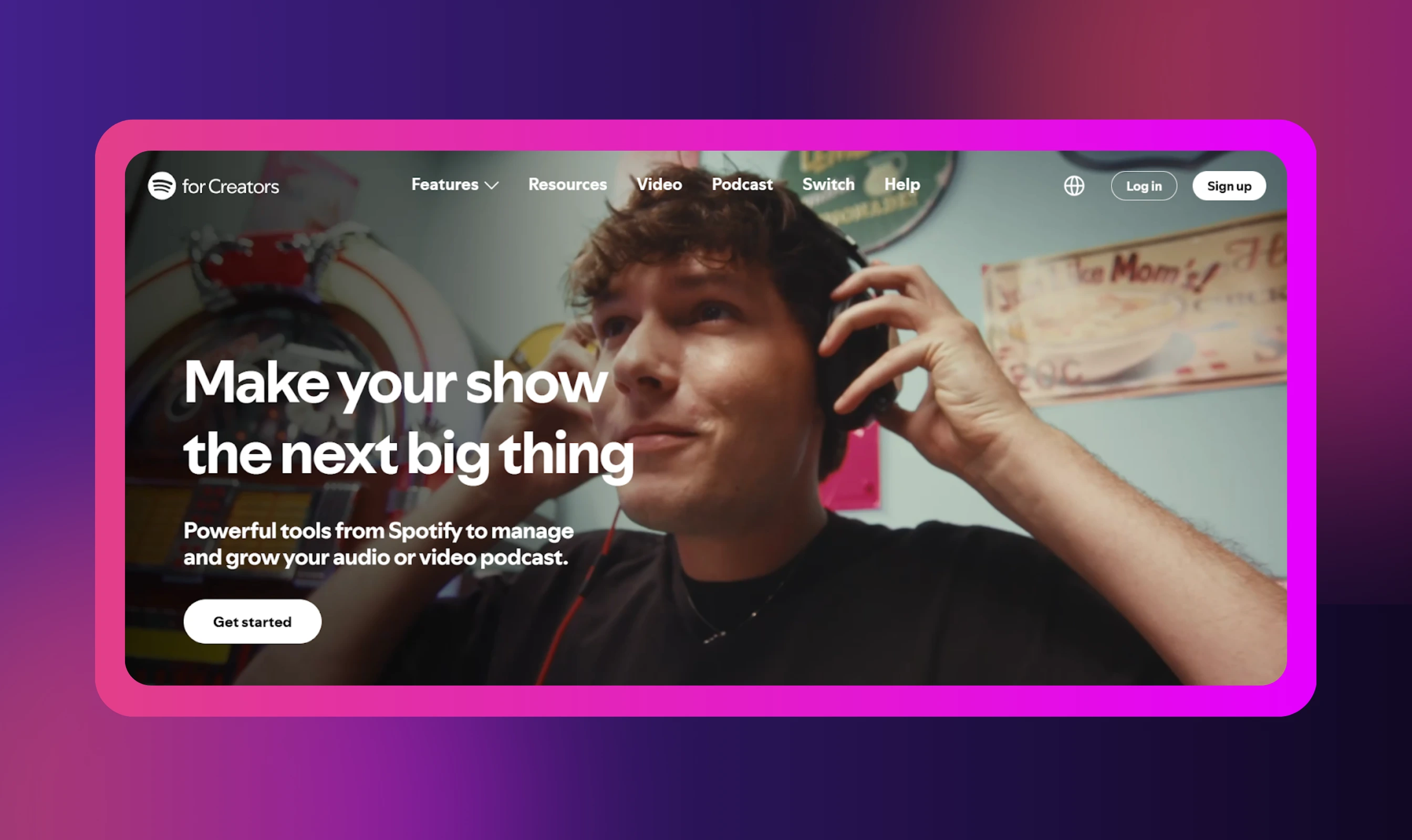
Anchor is a free all-in-one podcast creation tool owned by Spotify. While Anchor is ideal for beginners, Spotify caters to a broader audience. Anchor lets you record, edit, host, and distribute your podcast using a mobile app or through the content creator website.
The platform is designed for creators who want to get started quickly and scale their audience across all major listening apps, not just Spotify.
Monetization highlights:
- Built-in ads that let you insert sponsorship messages into your episodes
- Listener subscriptions for exclusive content and bonus episodes
- Seamless integration with Spotify for analytics and distribution
As mentioned above, Anchor is ideal for new or budget-conscious podcasters who want to test ideas and grow an audience without upfront costs. As your show matures, you can easily layer in paid content and sponsorships to build recurring revenue.
Patreon
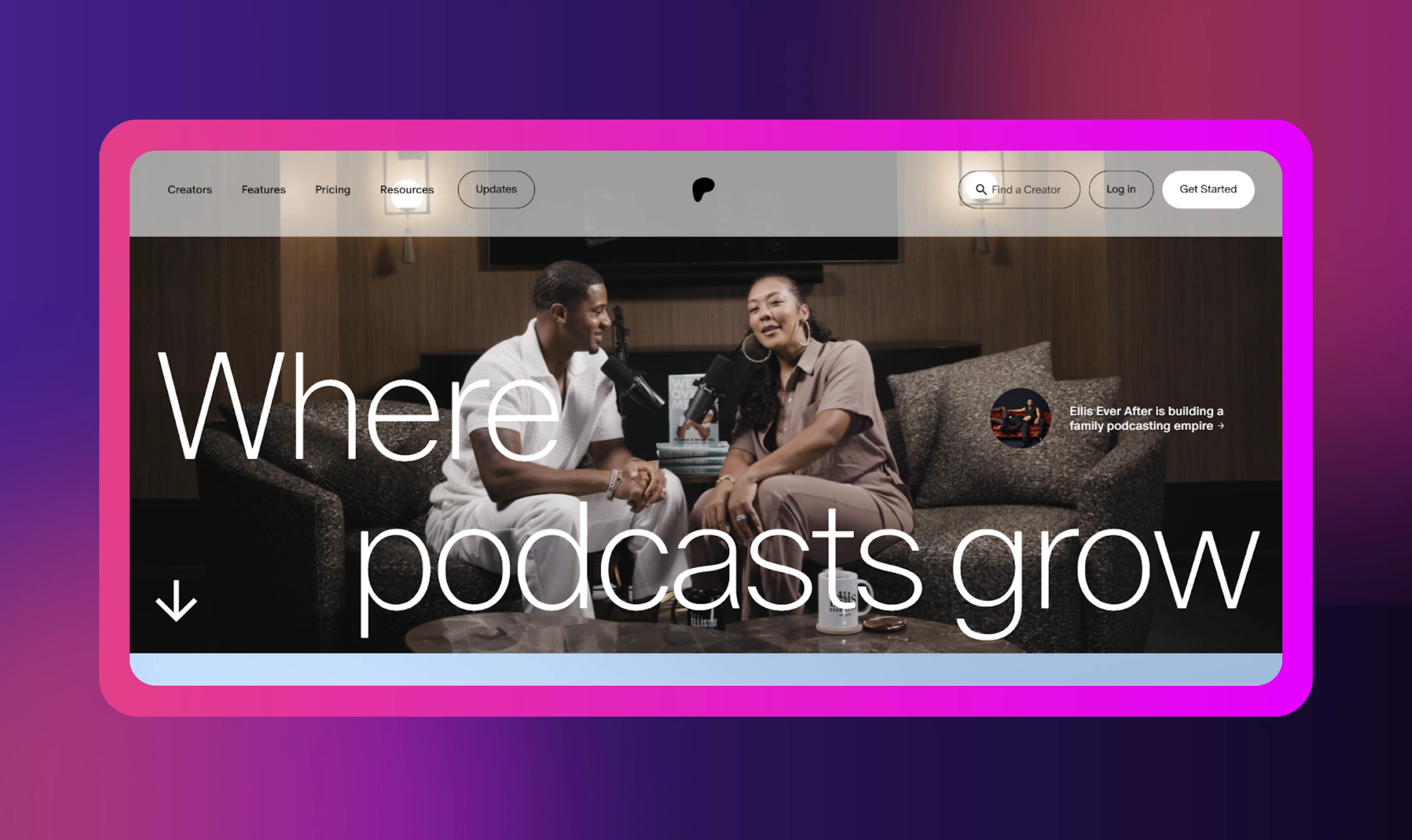
Patreon is a go-to membership platform for creators who want to turn their most engaged fans into paying supporters. Instead of relying solely on ads or one-off sponsorships, you can offer ongoing perks and exclusive content in exchange for a monthly subscription.
Monetization highlights:
- Recurring subscriptions at tiered levels, from basic supporter access to VIP perks
- Exclusive content such as bonus episodes, behind-the-scenes updates, or early releases
- Community tools (comments, polls, and messages) to deepen fan relationships
Patreon works well for creators sharing podcasts, educators, and niche creators with dedicated followings who value direct support. The platform helps creators build a predictable income while keeping creative control.
Ko-fi
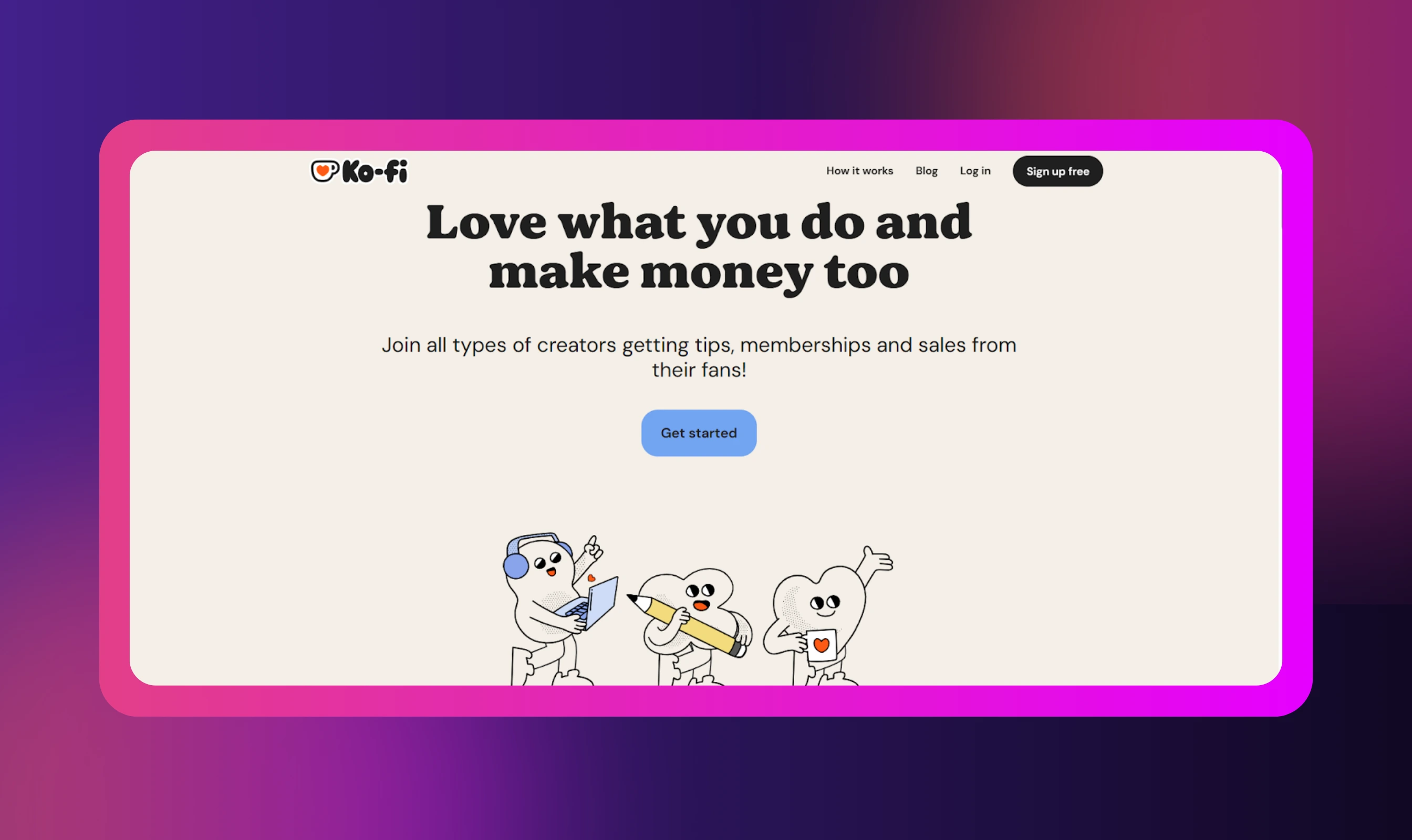
Ko-fi is a lightweight platform for all kinds of creators, including writers, podcasters, and artists. It offers a low-friction way for fans to support the creator’s work.
Instead of complex tiers, it’s built around simple “buy me a coffee”–style tips that let anyone contribute instantly with no sign-up needed. You can upgrade to memberships or sell digital items directly through your Ko-fi page.
Monetization highlights:
- One-time tips with zero platform fee on donations
- Optional memberships for recurring support
- Shop features to sell digital downloads, commissions, or small products
This platform is ideal for creators who are looking for an easy, no-pressure way to accept support or test demand for paid extras before building out a full subscription model.
Gumroad
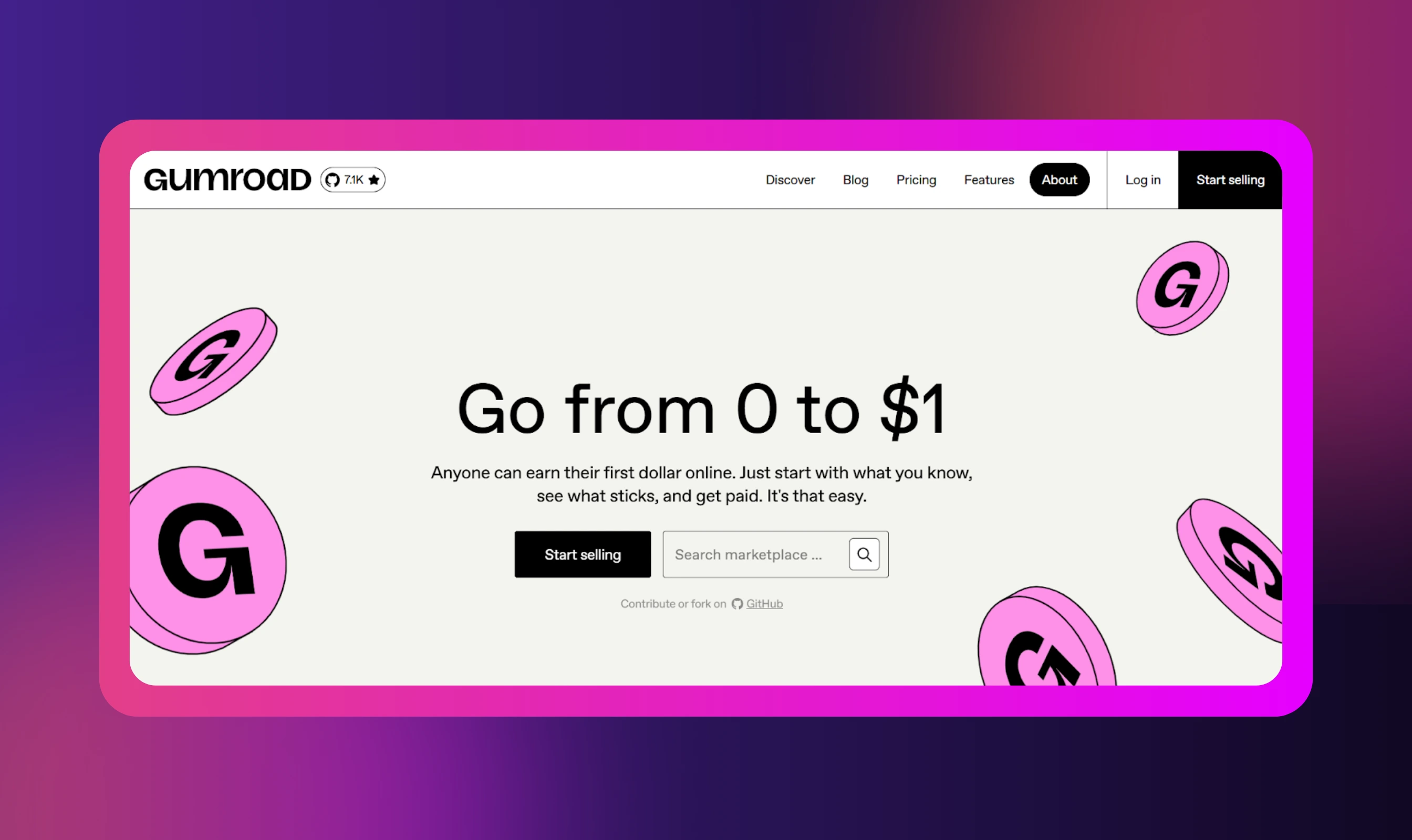
Gumroad is a creator-friendly marketplace built for selling digital products directly to your audience. Whether it’s courses, templates, ebooks, music, or subscription-based content, Gumroad gives you a clean storefront and payment infrastructure without needing your own website.
Monetization highlights:
- Digital downloads like PDFs, templates, or art files
- Online courses and video lessons
- Memberships or subscriptions for recurring access to premium content
- Built-in analytics and email tools to understand and grow your customer base
Gumroad is perfect for content creators who want to focus on making rather than managing complicated storefronts, as it takes off all the tech challenges of e-commerce.
What Are Content Creator Platforms?
A content creator platform is an ecosystem that enables creators to produce different types of content and share it with a wide audience. They can then monetize their content across multiple formats. Creators also get direct access to audiences, tools to manage production, and integrated monetization options.
At its core, a content creator platform has three purposes -
- Creation
These platforms offer user-friendly interfaces, templates, and editing tools so creators can produce professional-quality content without needing complex software or technical expertise.
Platforms like YouTube, Medium, or Anchor remove barriers to entry, allowing anyone to bring ideas to life.
- Distribution
These platforms handle hosting, syndication, and audience discovery. Algorithm-driven feeds, search indexing, and cross-platform sharing help creators reach both existing followers and new audiences.
- Monetization
They offer integrated revenue streams, including ad revenue, subscriptions, tips, branded content, digital product sales, and e-commerce features. This lets creators turn passion into income without relying solely on third-party sponsorships.
Thus, content creator platforms empower creators to own their audience, scale their reach, and diversify income streams, while offering analytics and engagement insights to refine strategy.
Why Choosing the Right Platform Matters
Choosing the right content creator platform can make or break your growth, visibility, and revenue potential. Not all platforms are built the same. Each differs in audience demographics, content formats, discoverability algorithms, and monetization options.
Understanding these differences is crucial for creators who want to maximize both reach and income.
- Audience Growth
Each platform attracts a distinct user base. For instance, TikTok attracts younger audiences and favors short-form, viral content, while YouTube accommodates everything from tutorials to long-form storytelling.
Similarly, Substack and Medium attract readers seeking in-depth, niche insights. Selecting a platform aligned with your target audience ensures your content reaches the people most likely to engage, subscribe, and share.
- Content Discoverability
Platforms use unique algorithms to recommend content. YouTube prioritizes watch time and relevance, TikTok emphasizes engagement signals like shares and comments, and Instagram promotes visually compelling Reels.
Selecting the right platform ensures your content reaches the right audience, grows organically, and maximizes engagement across multiple social media channels.
- Revenue Potential
Monetization varies widely across platforms. Some, like Patreon or Ko-fi, are built around direct fan support, while platforms like YouTube and Spotify, combine ad revenue with subscription models.
Understanding how to make money on TikTok and other channels, and aligning platform features with your revenue strategy, ensures your marketing efforts translate into sustainable income rather than sporadic or limited earnings.
In short, selecting the right platform isn’t just about sharing content, it’s about optimizing where your creative efforts will grow your audience, maximize discoverability, and generate revenue efficiently.
How to Choose the Right Platform for You
Selecting a suitable content creator platform is all about aligning your content type, audience, and monetization goals with the platform that maximizes your growth potential.
Here’s a step-by-step guide that will help.
1. Identify Your Content Type
Each content creator platform is optimized for different media types and user behaviors. Choosing the right platform will benefit you in terms of reach, algorithmic visibility, and revenue opportunities.
Below is an overview of the content types we’ve discussed so far, along with the platforms best suited for each.
- Video: YouTube, TikTok, and Instagram are ideal for tutorials, reviews, entertainment, or live streams.
- Written: Medium and Substack are best for long-form articles, newsletters, and thought leadership.
- Audio/ Podcast: Spotify, Anchor, and Patreon excel for podcasts, voiceovers, and audio courses.
- Membership and Fan Support: Patreon and Ko-fi are ideal platforms as they allow direct fan funding.
- Digital Products: Gumroad and Ko-fi suit creators selling templates, courses, or downloadable content.
2. Define Your Target Audience
Understand who exactly you are trying to reach. Once you know who they are, match your target audience to the platform’s core user base. For instance, TikTok works best for younger, trend-driven viewers, while Medium or Substack attract professional or niche readers. Instagram, on the other hand, thrives with lifestyle-focused communities.
3. Assess the Discoverability and Growth Potential
Platforms like TikTok, Instagram Reels, and YouTube Shorts have algorithmic feeds and help content reach new audiences quickly. Meanwhile, Substack, Patreon, and Ko-fi let you build a direct and long-term relationship with followers. Select the right mix to ensure your content grows organically while fostering a loyal community.
4. Evaluate Monetization Options
Before committing to a content creator platform, check out their platform fees, payout schedules, and how easily you can expand revenue streams later. Platforms like Patreon or Ko-fi focus on direct fan support, while YouTube or Spotify combine ads with subscription models. Choose one that best suits your monetization goals.
5. Test and Iterate on Repeat Mode
Choose one primary platform that aligns closely with your content type and growth goals and see how the various social media strategies work for you. Focus on consistently producing high-quality content and track key metrics like engagement, follower growth, and revenue to understand what resonates with your audience. Build consistency by testing different approaches on the same platform before expanding to others.
Monetization Strategies on Content Creator Platforms
Now that you know how to choose an ideal platform for your content, let’s look at avenues to turn your work into income. The key is to align strategies with your content type, audience behavior, and platform strengths.
Here’s a breakdown of actionable monetization strategies:
- Ad Revenue (YouTube, Spotify, TikTok): Join programs like the YouTube Partner Program or the TikTok Creator Fund. Optimize content for engagement and watch time to maximize ad earnings.
Value Tip: Longer YouTube videos allow multiple ad breaks; short, viral TikToks boost views and revenue.
- Fan Support and Memberships (Patreon, Ko-fi, Substack): Offer tiered plans with exclusive perks such as early releases or behind-the-scenes content.
Value Tip: Involve fans through polls and feedback to build loyalty and recurring income.
- Sponsorships and Brand Partnerships (YouTube, Instagram, TikTok): Create a media kit and collaborate with brands that align with your niche.
Value Tip: Keep content authentic. Sponsored posts that feel natural perform best.
- Affiliate Marketing (Instagram, YouTube, Medium): Join affiliate programs and share links through product reviews or guides.
Value Tip: Use ‘how-to’ or ‘top 5’ content to integrate links seamlessly while adding value.
- Digital Products and Courses (Gumroad, Ko-fi, Patreon): Sell templates, guides, or online courses tailored to your audience.
Value Tip: Focus on solving a clear problem to make your offering essential and worth a premium.
- Merchandise and Physical Products (YouTube, Instagram, TikTok, Gumroad): Launch branded merchandise or art-inspired products using fulfillment platforms.
Value Tip: Offer limited editions or exclusive drops to create urgency.
- Crowdfunding and One-Time Support (Ko-fi, Patreon, Substack): Encourage donations for special projects or creative milestones.
Value Tip: Be transparent about how funds are used to build trust and long-term support.
Reach Global Audiences with Murf AI Dubbing
Murf's AI dubbing technology empowers creators to effortlessly translate and localize their content into 40+ languages and use 200+ voices, preserving the original tone, emotion, and pacing. This capability enables content creators to engage international audiences, enhance discoverability, and unlock new revenue streams.
Step-by-Step Guide to Dubbing Your Content
- Upload Your Content: Add your video or audio file directly in Murf’s browser-based platform, no downloads or complicated software needed.

- Select Languages and Voices: Choose the original and target languages, then pick from a range of natural-sounding AI voices. Adjust the speed, pitch, and tone to match your content’s style.

- Generate and Review: Murf automatically dubs your content, maintaining timing and emotion. Review and make small adjustments if needed.
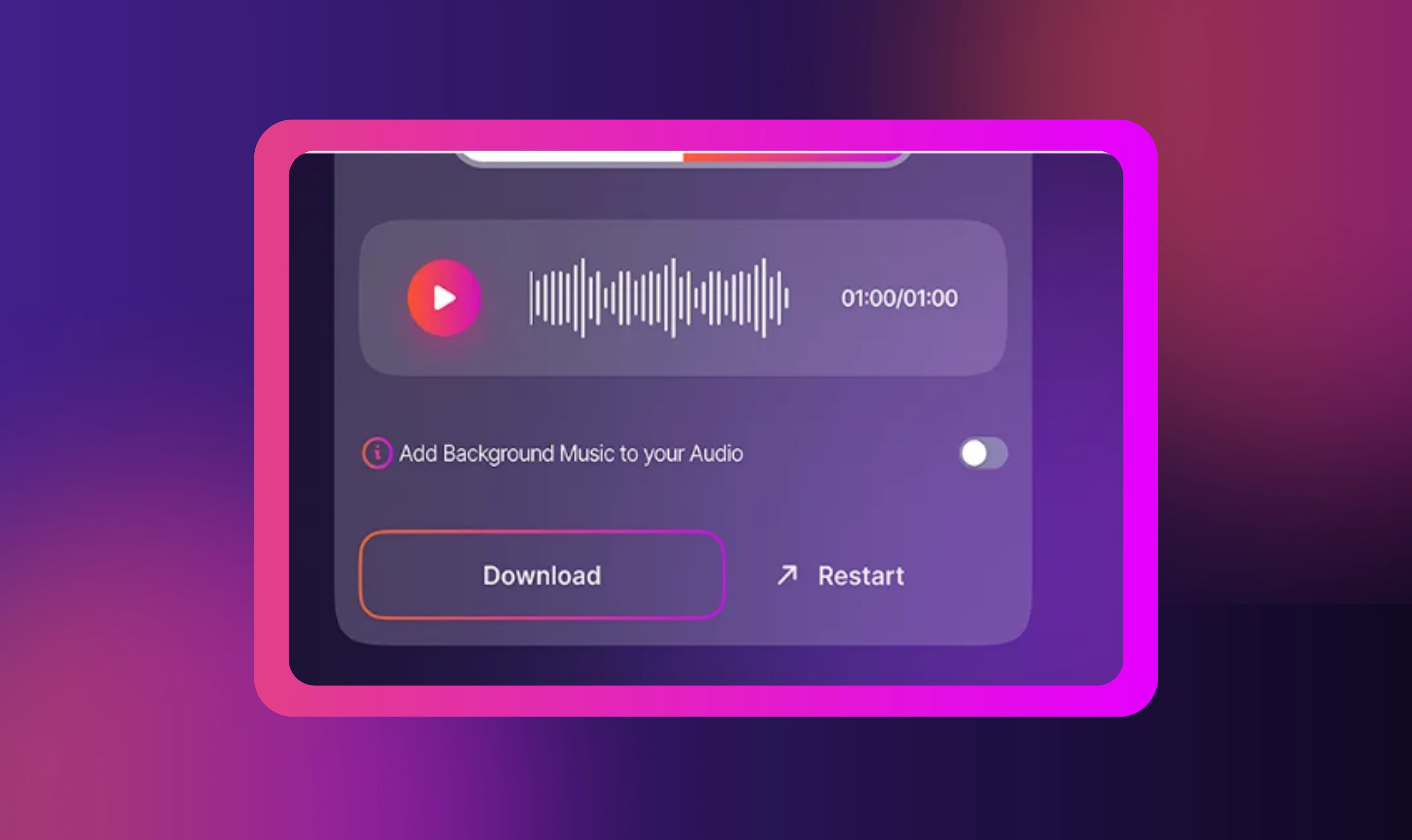
- Export and Share: Download the dubbed version and distribute it on your preferred platforms, reaching global audiences effortlessly.
Key Benefits for Creators
- Fast and Cost-Effective: Automate dubbing without hiring voice actors or studios, saving time and production costs.
- Broader Engagement: Multilingual content attracts international viewers, increasing watch time, subscriptions, and fan loyalty.
- Scalable Growth: Easily produce content in multiple languages, giving you the flexibility to expand your reach quickly.
By integrating Murf's AI video dubbing and voice dubbing into your workflow, you can turn a single piece of content into a global asset, driving higher engagement, more revenue opportunities, and stronger audience relationships worldwide.
Selecting the right content creation platform can dramatically influence how your work is discovered, monetized, and sustained over time. Whether you are building a following on video-first channels, growing a newsletter audience, or diversifying income streams with digital products, matching your goals to the platform’s strengths is key.
By testing, refining, and scaling strategically, you can grow faster without spreading yourself thin. For creators looking to add professional-grade AI voice generation to their toolkit, Murf offers a versatile, reliable option to bring that vision to life.
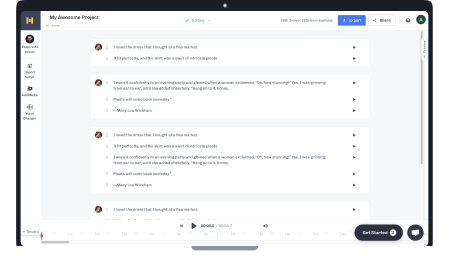
Frequently Asked Questions
How can I monetize my content?
.svg)
Creators can earn through multiple channels: ad revenue, subscriptions, memberships, digital product sales, sponsorships, and affiliate marketing. Choosing content creator platforms aligned with your audience and content type ensures your efforts generate consistent income and sustainable growth.
Should I focus on one platform or multiple?
.svg)
Starting with one primary platform helps you master its algorithm, build a dedicated audience, and optimize content strategy. Once successful, expanding to secondary content creation platforms can diversify reach, engagement, and revenue without spreading resources too thin.
What content creation tools pay the most for content creators?
.svg)
Revenue varies by content type and audience size. YouTube, TikTok, and Instagram offer strong ad and sponsorship opportunities, while Patreon, Ko-fi, and Substack enable direct fan support, often resulting in higher recurring income for niche or loyal audiences.
What content creation platform do most influencers use?
.svg)
Influencers gravitate toward content creation tools with high engagement and discoverability. Instagram and TikTok dominate for visual content, YouTube for video storytelling, and Twitter or LinkedIn for thought leadership, depending on niche and audience demographics. Choosing the right influencer marketing platform helps creators manage campaigns, track performance, and connect with brands more effectively.
What type of content creation makes the most money?
.svg)
Video content, especially long-form, tutorial, and entertainment videos on content creation platforms like YouTube, often generates the highest income due to ad revenue, sponsorships, and subscriptions. Niche-written or audio content can also be lucrative with loyal audiences.



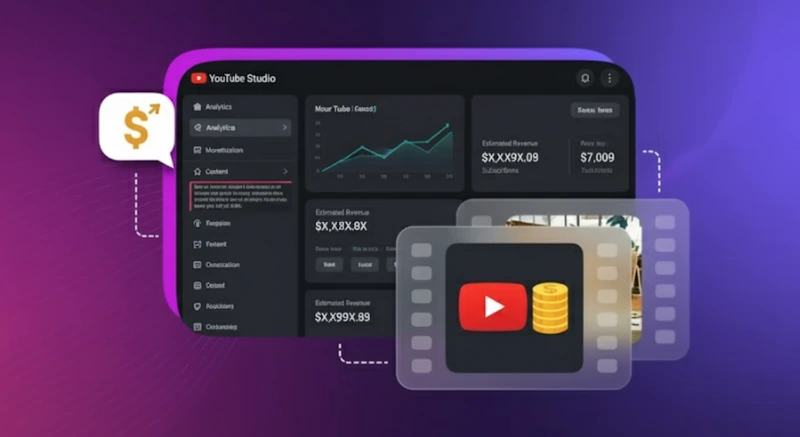



.webp)






